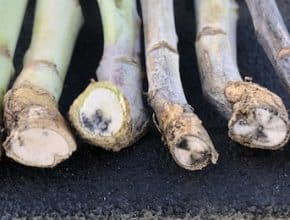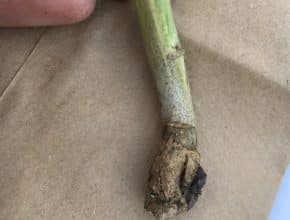How to harvest green crop sooner and faster? Should canola regrowth get sprayed this fall? Under what circumstances should I switch blackleg R genes?…
Blackleg
-
-
Swath timing | Swathing in high temps | Pre-harvest intervals | Disease scouting | Assessing maturity in uneven fields…
-
Herbicide pitfalls | Flea beetles | Blackleg fungicide now? | Drill performance | Lambda-cyhalothrin label update…
-
Late season disease scouting | What's chewing into your canola | NDVI: scouting from the sky | Managing GR kochia…
-
Protect that (high value) crop from disease | What's the ROI on that new product? | Top tips to optimize 1-pass herbicide | What if Mother Nature doesn't play along…
-
Changes to canola disease labeling systems, protocols and cultivar screening – which all work toward ensuring high quality canola can be produced with minimized disease pressure – are covered by the pathology sub-committee of the Western Canada Canola/Rapeseed Recommending Committee (WCC/RRC). A recent sub-committee meeting on February 2 included discussion and changes on blackleg, clubroot and verticillium stripe…
-
Scientific research in Western Canada shows lower yields for canola in short rotations. Blackleg (shown above), clubroot and many other factors can cause this yield loss…
-
Around 60 per cent seed colour change (swath timing) is the best time to scout for blackleg as the basal cankers, which cause significant yield loss, are easy to see. Check fields – even if growing resistant (R) rated hybrids. An R rating is not immunity and does not tell much about if it will be effective against the races…
-

